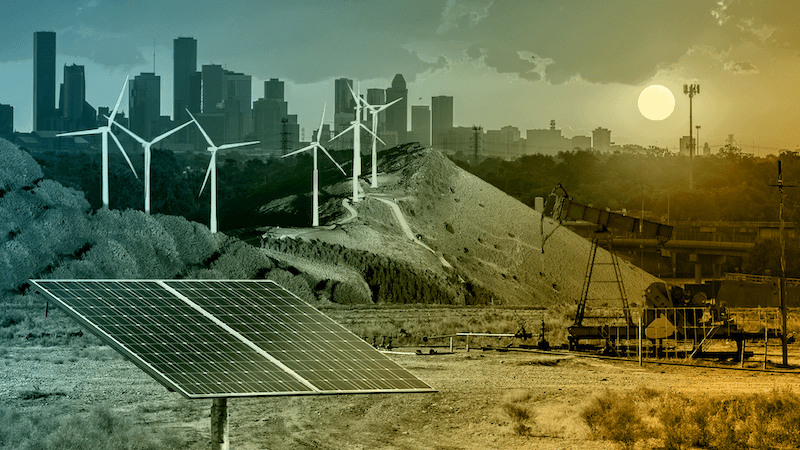Texas Energy Rates: How to Get the Best Deals

Texas’s energy landscape is both diverse and complex, blending traditional resources like oil and natural gas with growing renewable energy sectors, especially wind and solar power. For Texans, understanding these varied energy rates is essential for both cost savings and environmental impact.
Navigating Texas energy means more than just lowering bills; it’s about making informed decisions that affect the broader energy market, efficiency of the grid, and environmental sustainability. With the state’s extreme weather patterns influencing energy demands, knowledge is power for Texans seeking the best energy options.
This guide provides insights into Texas’s energy rates, helping you understand the factors driving costs and the shift towards cleaner energy. Whether a long-time resident or new to the Lone Star State, mastering these concepts is key to economical and eco-friendly energy consumption.
Texas Energy Structure
The Electric Reliability Council of Texas (ERCOT) is central to managing Texas’s electric grid and power supply. As an independent organization, ERCOT coordinates between power plants, transmission lines, and consumers to balance electricity supply with demand. It plays a critical role, especially given Texas’s extreme weather conditions, but does not generate power itself.
Texas’s electric grid is unique in its design, operating largely independently from the national grid. This independence offers control and flexibility in managing the state’s power needs but also poses challenges during high-demand periods.
The Public Utility Commission of Texas (PUCT) oversees this system. It regulates electric utilities, ensuring fair and reliable energy delivery and setting rates for services. The PUCT’s decisions directly affect energy rates, balancing consumer needs with industry interests. They also oversee renewable energy standards and foster competition in the electricity market, impacting cost and service quality.
Understanding the roles of ERCOT and the PUCT is crucial for Texans to navigate the state’s energy landscape and make informed decisions about their energy usage and expenses.
Main Energy Sources in Texas
Texas’s energy profile is a blend of traditional and renewable sources, each playing a significant role in the state’s energy production and consumption.
Renewable energy: solar and wind power
Texas is a national leader in renewable energy, particularly in wind and solar power. The state boasts the highest wind power generation capacity in the U.S., with sprawling wind farms dotting its landscape, especially in West Texas and the Panhandle.
Solar energy is also on the rise, thanks to Texas’s abundant sunshine. Large-scale solar farms and increasing residential solar panel installations contribute to the state’s energy mix, reducing reliance on fossil fuels and aiding in environmental conservation.
Natural gas and crude oil
On the traditional energy front, Texas is a powerhouse in natural gas and crude oil production. It leads the nation in both sectors, with vast reserves and a well-established infrastructure for extraction and processing. This dominance in natural gas and crude oil not only significantly contributes to the state’s economy but also to the national energy landscape. These resources are critical for both power generation and as raw materials for various industries, underscoring their importance beyond just energy production.
Clean energy initiatives vs. fossil fuels
While Texas continues to rely heavily on fossil fuels, there is a growing shift toward clean energy initiatives. The state’s abundant natural resources make it an ideal place for renewable energy development. This transition is partly driven by environmental concerns and the need to reduce greenhouse gas emissions. However, the change is also economically motivated as renewable energy technologies become more cost-effective and consumer demand for cleaner energy options grows.
Understanding Energy Rates and Plans
In Texas, energy rates are influenced by a mix of market forces, regulatory decisions, and the state’s unique energy infrastructure.
Energy rates in Texas are primarily market-based, meaning they fluctuate based on supply and demand dynamics. Factors like fuel prices (especially natural gas, a major power generator), weather conditions, and operational costs of power plants significantly influence these rates. Regulatory bodies, like the Public Utility Commission of Texas, also play a role in setting guidelines and caps to ensure fairness and prevent excessive charges.
Texans have a variety of energy plans to choose from, catering to different needs and preferences:
- Fixed-rate plans. These offer a constant rate per kilowatt-hour (kWh) for the duration of the contract, regardless of market changes. Ideal for those seeking stability in their monthly bills.
- Variable-rate plans. Rates can fluctuate monthly based on market conditions. Suitable for consumers willing to take advantage of potentially lower rates but at the risk of unexpected increases.
- Indexed plans. These are tied to a specific formula, often linked to a publicly available index. The rate changes as the index does, providing a mix of predictability and market sensitivity.
- Green energy plans. Focused on renewable energy sources, these plans support environmental sustainability but may come at a slightly higher cost.
Electricity providers in Texas are the companies that sell electricity plans to consumers. They purchase wholesale electricity from generators and sell it at retail rates, offering various plans with differing terms and benefits.
Utilities, on the other hand, are responsible for the transmission and distribution of electricity, regardless of which provider a consumer chooses. They maintain the infrastructure (like power lines and transformers) and are tasked with restoring power during outages.
The open market in Texas allows consumers to choose their electricity providers, encouraging competition that can lead to better service and pricing. However, this also places the onus on the consumer to understand and choose the plan that best suits their needs, making an informed understanding of how energy rates and plans work in Texas crucial.
Factors Influencing Energy Rates
Energy rates in Texas are shaped by diverse factors, including renewable energy integration, natural gas production, consumption patterns, and market trends.
- Renewable energy and natural gas. The growth of renewable sources like wind and solar has begun to impact energy prices, often lowering costs as these technologies become more affordable. However, the variability in renewable energy production is typically balanced by natural gas, which is a major and consistent energy source in Texas. Consequently, natural gas prices heavily influence electricity rates, given their direct correlation.
- Consumption patterns. Texas experiences high energy demand, especially during hot summers for cooling purposes. This increased usage during peak times drives up electricity prices. Additionally, the state’s growing population and industrial activities contribute to rising energy demand, influencing overall rates.
- Market trends. According to the U.S. Energy Information Administration, Texas’s energy market is evolving with a noticeable increase in electricity production from renewables while still heavily relying on natural gas and oil. Fluctuations in energy prices are linked to changes in fuel costs, advancements in energy technology, and policy developments. These trends provide valuable insights for consumers to understand and anticipate shifts in energy rates, aiding in more informed energy plan choices.
Dealing with Outages And Efficiency
Energy outages can be a challenging aspect of living in Texas, especially given the state’s extreme weather conditions. Being prepared and understanding the role of energy efficiency can significantly mitigate these challenges.
Texans can prepare for and manage energy outages in several ways.
- Emergency kit. Keep an emergency kit with flashlights, batteries, a first-aid kit, and essential supplies.
- Alternative power sources. Consider investing in a generator or portable battery packs for essential power needs during an outage.
- Stay informed. Sign up for local alerts and updates from your electricity provider about outages and restoration times.
- Surge protection. Use surge protectors for electronic devices to prevent damage when power returns.
- Insulation. Properly insulate your home to retain heat during winter outages and cool air during summer outages.
Energy efficiency is key to reducing both electricity bills and environmental impact. Implementing energy-efficient practices and appliances can lead to significant savings. Simple measures like using LED lighting, setting thermostats appropriately, and ensuring good insulation can reduce energy consumption. Energy-efficient appliances, although sometimes more expensive upfront, can offer long-term savings and reduced energy use.
Renewable energy sources play an increasingly important role in energy stability. Unlike traditional fossil fuels, renewables provide a more sustainable and less volatile source of energy. Solar panels and wind turbines, for example, can supply electricity even during some outages, especially when combined with battery storage systems.
Choosing the Right Electricity Plan
Navigating the myriad of electricity plans in Texas can be daunting. However, with the right approach, you can find a plan that fits your needs and budget.
Evaluating electricity plans
- Understand your usage. Review your past electricity bills to understand your monthly usage patterns. This will help you determine what type of plan suits your consumption habits.
- Compare rates. Utilize online comparison tools to compare rates and terms of various plans available in your area. Pay attention to both the per-kWh rate and any additional fees.
- Fixed vs. variable rates. Decide if you prefer the stability of a fixed-rate plan or if you’re willing to take a chance with a variable-rate plan that might offer savings during off-peak periods.
- Contract length. Consider how long you want to commit to a plan. Shorter contracts offer flexibility, while longer contracts might provide price stability.
- Renewable energy options. If environmental impact is a concern, look for plans that offer renewable energy sources like wind or solar power.
Understanding notifications and terms
Electricity companies often send notifications about changes in rates, terms, or your contract.
- Read the fine print. Always read the terms and conditions before signing up for a plan. Look for any hidden fees or clauses that may affect your bill.
- Rate changes. Be aware of how and when a provider can change rates, especially for variable-rate plans.
- Early termination fees. Check if there are penalties for switching providers or plans before your contract ends.
Advice for Texans
- Check for bundling options. Some providers offer bundled services, such as gas and electricity, which might offer cost savings.
- Consider time-of-use plans. If your schedule is flexible, a time-of-use plan, which offers lower rates during off-peak hours, could be beneficial.
- Customer service and reputation. Research providers’ customer service and reliability. Reviews and ratings can provide insight into a provider’s service quality.
- Plan for the future. Consider any upcoming changes in your household that might affect your energy use, such as home renovations or purchasing an electric vehicle, and choose a plan that can accommodate these changes.
Selecting the right electricity plan in Texas is about balancing your energy needs, budget constraints, and personal preferences. By doing thorough research and understanding your own consumption patterns, you can make a choice that not only saves money but also aligns with your lifestyle and values.
Environmental Impact and Future Trends
Texas’s energy mix, balancing fossil fuels with renewable sources, significantly impacts the environment. While oil and natural gas contribute to greenhouse gas emissions, the state’s increasing use of wind and solar power helps reduce these effects, improving air quality and public health.
Future trends indicate a growing shift towards renewable energy and enhanced energy efficiency in Texas. Driven by technological advancements, economic viability, and rising demand for sustainable energy, this shift positions Texas as a leader in renewable energy development.
Nationally, Texas is a crucial player in U.S. energy exports, including oil, natural gas, and renewable technologies. As global energy dynamics evolve, Texas’s role is expected to expand, influencing both national energy security and international energy markets. The state’s approach to balancing traditional and renewable energy sources will be key in shaping its environmental, economic, and strategic future.
Strategies for the Best Texas Energy Deals
Texans looking to save on energy costs can benefit from understanding their usage patterns and exploring the competitive rates offered in the deregulated market. Considering renewable options like solar or wind energy can also lead to long-term savings and environmental benefits. Staying informed about market trends and embracing energy-efficient practices and appliances are crucial for additional savings.
As Texas’s energy landscape evolves, focusing on sustainability and efficiency becomes increasingly important for consumers. This transition offers new opportunities for cost-effective and eco-friendly energy solutions.
For those seeking to navigate these options, Payless Power offers a variety of flexible and affordable energy plans. Visit Payless Power’s website to find and enroll in a plan that fits your needs, contributing to a more sustainable energy future in Texas.
Discover your perfect energy plan with Payless Power and start saving today in this dynamic and evolving energy market.
What our customers are saying
See why our power customers say we're the best electricity provider in Texas!
I was worried about getting electricity for my home through a prepaid company. I was calling around to see different rates then going through all the hassle of credit checks while dropping points each…
I have been with this company for several years and have been very happy since. Even when I moved, they made my usually stressful situation very easy and carefree. I recommend them to everyone that I…
I have enjoyed the service for 2 years now. In the beginning this service was planned to be temporary but with the service being so effective for me i decided to keep it for the long haul. I’m a happy customer.











